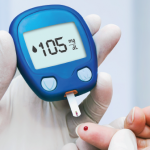A 67-year-old female patient from New York with a long history of fatigue, joint and muscle pain, rash and fevers is scheduled to see the rheumatologist in five days. She is referred to the rheumatologist by her primary care physician (PCP) for possible diagnosis of lupus erythematosus. The patient requested her medical records from her PCP, neurologist, dermatologist and endocrinologist be sent to the rheumatology office prior to her visit.
Upon receipt, the rheumatologist reviews the extensive medical records from her neurologist, dermatologist and endocrinologist. He notes the following lab and diagnostics test results:
PCP: The records list several lab results for CBC, ANA and erythrocyte sedimentation rate lab tests. Results show the ANA is positive; CBC shows her red blood count, hemoglobin and hematocrit are low; and the ESR has moderate elevation.
Dermatologist: There is a pathology report for a punch biopsy of skin rash on the patient’s neck, which is benign, but the patient still complains of a reduced sense of sensation around the neck area when it is touched.
Neurologist: The notes show that a CT angiogram was performed for complaints of continuous tingling in her hands, but the result was negative for any nerve damage.
The rheumatologist calls the patient’s PCP to discuss the patient’s previous history and treatment because it seems a page is missing from the notes. The total time spent reviewing the records and tests, as well as discussing the case, is reported as 97 minutes throughout the day.
